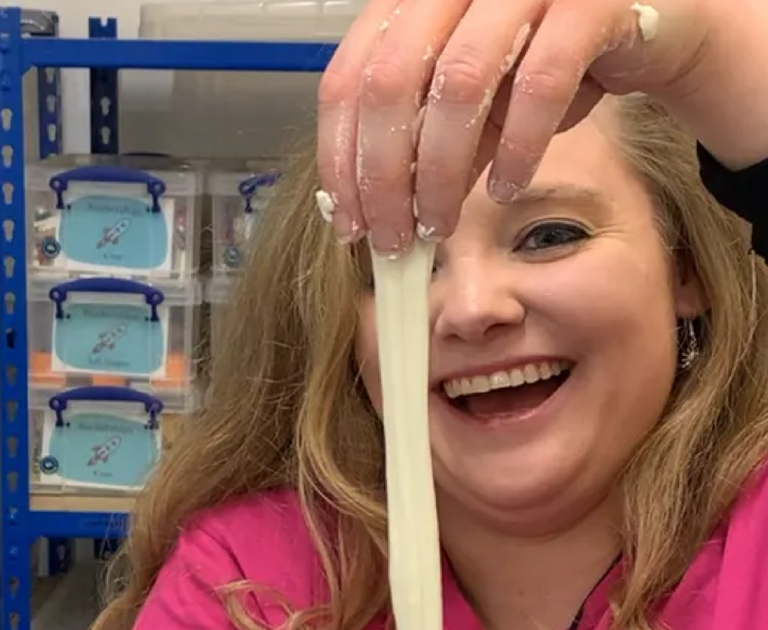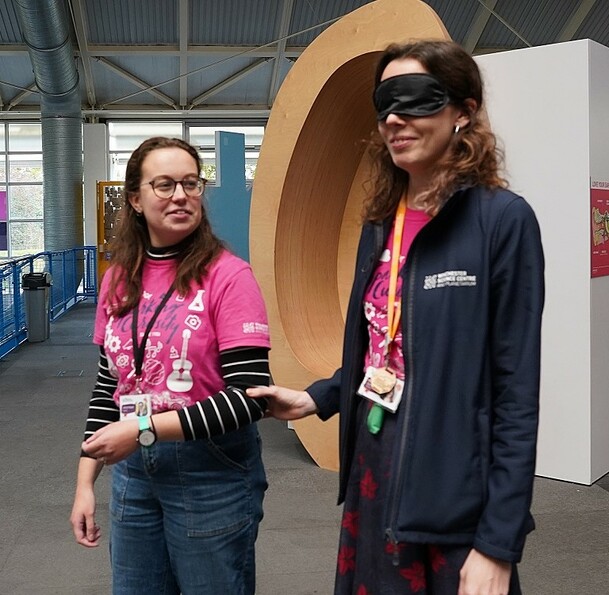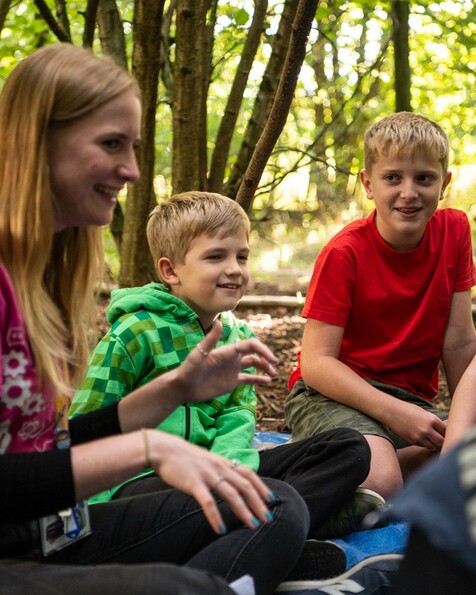Slime – it’s stretchy, squishy, fun, and perfect for sensory play. But did you know that many types of slime can be harmful to the environment when they are thrown away. Our Curiosity team at Winchester Science Centre have taken matters into their own slime-filled hands, by developing a slime recipe that’s good for the environment. This comes after our charity launched a Group Sustainability Strategy to support positive and collective action against climate change and biodiversity loss.
After months of research and testing, a new eco-friendly slime has been introduced at the Science Centre to demonstrate the properties of matter and highlight the importance of sustainability to children in the hugely popular schools’ workshop on matter. Slime is a great tool for our team to demonstrate the properties of matter to children because it allows them to explore an abstract scientific concept in an interactive and relatable way.
But, with sustainability also at the heart of everything we do, we knew it was important to change the formula. Our old slime was created using PVA alcohol and PVA glue as the base, which is a plastic polymer. This meant that the waste created from each workshop contributed to plastic pollution.
So, our slime testers got to work! Lead by Schools Curiosity Officer Jackson Hemming, the team spent months researching and trying out different ingredients to create the Science Centre’s very own sustainable slime. The new and improved recipe is no secret. To make it, just add one cup of cornflour, 30ml of water, with two pinches of xanthan gum into a bowl. Then slowly mix. And BOOM you have slime! The best part is all the ingredients can be eaten which means it’s biodegradable.
Let’s explore the science… when cornflour and water are slowly mixed together, they create a substance called Oobleck, a non-Newtonian fluid that acts like a solid or liquid depending on how much pressure is applied to it. A really common example of a non-Newtonian fluid is tomato ketchup! When xanthan gum, an ingredient used as a thickener, stabiliser, and emulsifier in cooking, is added, it binds the water molecules together to stop them flowing apart so freely. This helps the slime keep its shape, leading to longer lasting play!
Jackson Hemming, Curiosity Officer at Winchester Science Centre, said: “Our matter workshop is one of our most popular school trip workshops. Its educational, fun, and now sustainable. Changing our slime to be biodegradable is one small part of our sustainability journey that we hope will have a big impact. Our slime might be a little bit more messy, but learning should be messy!”
Fancy making it at home? Watch this video and follow along as a team of our Science Inspirers show you how to make our biodegradable slime for yourself. Let the fun begin!






